Doctor Who: Frontier In Space, Part 3
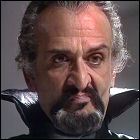 The 340th episode of Doctor Who airs on BBC1. This is the last story featuring Roger Delgado as the Master before the actor’s untimely death in June 1973. Madhav Sharma (Moonbase 3) guest stars.
The 340th episode of Doctor Who airs on BBC1. This is the last story featuring Roger Delgado as the Master before the actor’s untimely death in June 1973. Madhav Sharma (Moonbase 3) guest stars.
More about Doctor Who in the LogBook
Order VWORP!1 from theLogBook.com Store

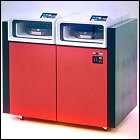 IBM introduces the Model 3340 hard disk drive system for its System/370 mainframe computers. Housed in a large casing similar to a combined washer and dryer, this is the birth of modern hard disk technology, with read and write heads integral to the drive itself rather than being mounted on an arm which reaches into the drive casing. The 3340’s removable modules, each containing drive platters and the read/write heads, can be swapped out with other modules containing other drives. IBM ships the 3340 with two maximum storage capacities: 35 megabytes or 70 megabytes; the unit is internally called a Winchester hard drive, a case of a code name that sticks well beyond development. The 3340 is available through 1984.
IBM introduces the Model 3340 hard disk drive system for its System/370 mainframe computers. Housed in a large casing similar to a combined washer and dryer, this is the birth of modern hard disk technology, with read and write heads integral to the drive itself rather than being mounted on an arm which reaches into the drive casing. The 3340’s removable modules, each containing drive platters and the read/write heads, can be swapped out with other modules containing other drives. IBM ships the 3340 with two maximum storage capacities: 35 megabytes or 70 megabytes; the unit is internally called a Winchester hard drive, a case of a code name that sticks well beyond development. The 3340 is available through 1984.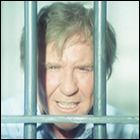 NBC airs the
NBC airs the  The 26th and final episode of Gerry Anderson’s live-action UFO series airs on ITV, starring Edward Bishop and Michael Billington. Wanda Ventham guest stars in the curiously long-delayed series finale.
The 26th and final episode of Gerry Anderson’s live-action UFO series airs on ITV, starring Edward Bishop and Michael Billington. Wanda Ventham guest stars in the curiously long-delayed series finale.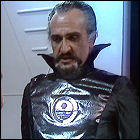 The
The  NBC airs the 21st episode of Leslie Steven’s “spy-fi” series Search, starring Tony Franciosa and Burgess Meredith. Sebastian Cabot (Ghost Story) and Diana Muldaur (Star Trek: The Next Generation) guest star.
NBC airs the 21st episode of Leslie Steven’s “spy-fi” series Search, starring Tony Franciosa and Burgess Meredith. Sebastian Cabot (Ghost Story) and Diana Muldaur (Star Trek: The Next Generation) guest star.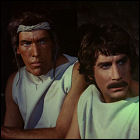 CBS premieres the made-for-TV movie
CBS premieres the made-for-TV movie 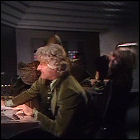 The
The  NBC airs the 23rd and final episode of the supernatural anthology series Circle Of Fear (previously known as Ghost Story). David Soul and Sheila Larkin star.
NBC airs the 23rd and final episode of the supernatural anthology series Circle Of Fear (previously known as Ghost Story). David Soul and Sheila Larkin star.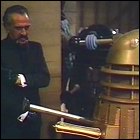 The
The 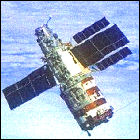 The Soviet Union launches a second space station, and the first station designed exclusively for military tasks in orbit. Salyut 2 is the first station to use the Almaz military space station design devised in the 1960s as a response to the US Air Force’s never-flown Manned Orbiting Laboratory. Within two weeks, however, technical difficulties take their toll: Salyut 2 begins to tumble out of control, and its crew compartment depressurizes. (The redesigned Soyuz vehicle is not ready to fly yet, so no crew ever visits Salyut 2.) The second Soviet space station burns up in the atmosphere less than two months after launch.
The Soviet Union launches a second space station, and the first station designed exclusively for military tasks in orbit. Salyut 2 is the first station to use the Almaz military space station design devised in the 1960s as a response to the US Air Force’s never-flown Manned Orbiting Laboratory. Within two weeks, however, technical difficulties take their toll: Salyut 2 begins to tumble out of control, and its crew compartment depressurizes. (The redesigned Soyuz vehicle is not ready to fly yet, so no crew ever visits Salyut 2.) The second Soviet space station burns up in the atmosphere less than two months after launch.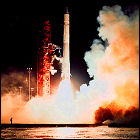 The unmanned space probe Pioneer 11 is launched on a course that will be one of the first real tests of the
The unmanned space probe Pioneer 11 is launched on a course that will be one of the first real tests of the 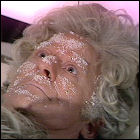 The
The 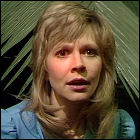 The
The 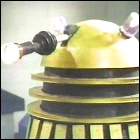 The
The 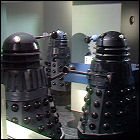 The
The 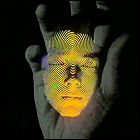 The
The 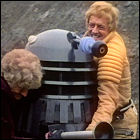 The
The 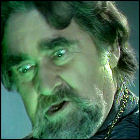 The
The 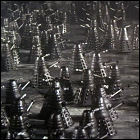 The
The  NBC airs the 42nd episode of Night Gallery, an anthology series of original short plays and short story adaptations hosted by Rod Serling. Dean Stockwell and Sally Field guest star.
NBC airs the 42nd episode of Night Gallery, an anthology series of original short plays and short story adaptations hosted by Rod Serling. Dean Stockwell and Sally Field guest star.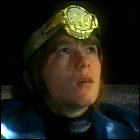 The
The 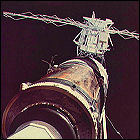 The first American space station,
The first American space station, 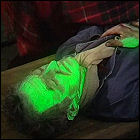 The
The 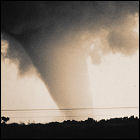 The National Severe Storms Laboratory in Norman, Oklahoma dispatches “storm chasers” to track, follow, and observe the behavior of storms in a predicted tornado outbreak. The chasers manage to document the complete development of a tornado in Union City, Oklahoma on film and on an experimental Doppler radar system; for the first time, large-scale cloud rotation at high altitude is observed on radar prior to the appearance of a funnel cloud, a key discovery in tornado prediction. This phenomenon, called the Tornadic Vortex Signature, is a precursor to virtually every radar-detected tornado.
The National Severe Storms Laboratory in Norman, Oklahoma dispatches “storm chasers” to track, follow, and observe the behavior of storms in a predicted tornado outbreak. The chasers manage to document the complete development of a tornado in Union City, Oklahoma on film and on an experimental Doppler radar system; for the first time, large-scale cloud rotation at high altitude is observed on radar prior to the appearance of a funnel cloud, a key discovery in tornado prediction. This phenomenon, called the Tornadic Vortex Signature, is a precursor to virtually every radar-detected tornado.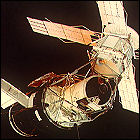 The first three-man Skylab crew lifts off to undertake a mission far different from the one for which they had trained. Their primary objective is now to save the crippled station from the damage it suffered during launch; as it is, Skylab is uninhabitable, with temperatures in its workshop and crew quarters soaring above 100 degrees, threatening to heat up items inside enough to fill the space with toxic gases. The first repair spacewalk takes place less than 24 hours after the crew arrives in an Apollo capsule, and succeeds in starting to drop the temperature inside.
The first three-man Skylab crew lifts off to undertake a mission far different from the one for which they had trained. Their primary objective is now to save the crippled station from the damage it suffered during launch; as it is, Skylab is uninhabitable, with temperatures in its workshop and crew quarters soaring above 100 degrees, threatening to heat up items inside enough to fill the space with toxic gases. The first repair spacewalk takes place less than 24 hours after the crew arrives in an Apollo capsule, and succeeds in starting to drop the temperature inside.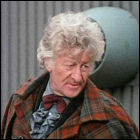 The
The